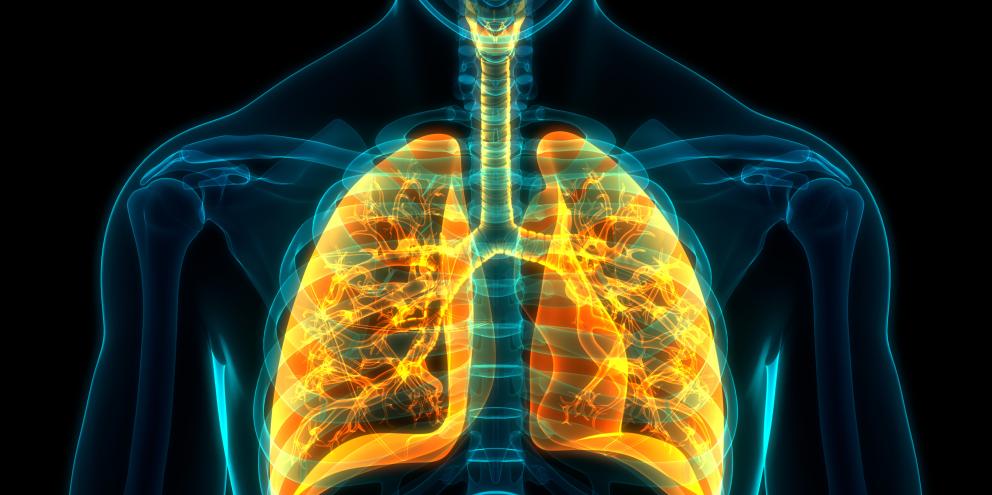
Mechanical ventilation is a potentially life-saving treatment for individuals with acute lung injury. However, use of a ventilator is also fraught with potential complications, including lung injury.
Known as ventilator-induced lung injury of VILI, this dangerous side effect of mechanical ventilation primarily occurs due to mechanisms that include alveolar over-distention, also known as volutrauma, barotrauma, atelectotrauma and inflammation or biotrauma. Yet no matter, which mechanism is behind the injury, VILI has the potential to cause significant morbidity and mortality, making it vital that clinicians use every resource available to reduce the incidence of this complication1.
Traditionally, efforts to reduce VILI have been directed toward lower driving pressure and tidal volume, while ignoring the impact of flow and respiratory rate. However this focus on adjusting one or two parameters has not provided reliable protection against the onset of VILI.
To correct this issue and improve patient safety, an integral concept has emerged that unites the causes of ventilator-induced lung injury in a single variable. This concept, known as mechanical power incorporates the consideration of the quantity of power supplied to the respiratory system per unit time by a ventilator.
In this article, we’ll take a look at the mechanical power concept, including various methods which have been proposed for measurement. We’ll also delve into the role of mechanical power in pressure-controlled ventilation (PCV) and volume-controlled ventilation (VCV) modes and dive into how using this non-invasive quantitative tool can help predict VILI and support lung protective ventilation.
Introduction to the Mechanical Power Concept
Research has shown that the degree of VILI is connected to the quantity of energy delivered to a respiratory system through a mechanical ventilator, also known as mechanical power2. The parameters that define mechanical power are set by the bedside physician during controlled mechanical breathing. These include tidal volume (VT), inspiratory airflow (VI), air pressure (Paw), post end-expiratory pressure (PEEP) levels, respiratory rate (RR) and other patient-dependent parameters such as plateau, peak and driving pressures2.
Because mechanical power captures the influence of PEEP, respiratory rate, lung compliance, and other factors underlying the concept of energy transfer to the patient from the ventilator , it is a significantly pristine measure to assess ventilator settings and the potential for VILI3.
Despite its benefits, most ventilators lack the ability to calculate mechanical power.
Mechanical Power Calculation Methods
Divergent mathematical equations have been created to tabulate mechanical power, ranging from pressure-volume (PV) curves to more sophisticated formulas that consider static and dynamic components4. Subsequently, simpler methods primarily evaluate the dynamic components alone.

However, the mechanical power concept and calculation was proposed by Professor Gattinoni. The formula computes the mechanical power through multiplying every component of the motion equation with the variation of RR and volume.
This equation Gattinoni proposed is as follows:
Powersrs = RR . { ∆V2 . [1/2.ELrs + RR. (1+I:E)/60.I:E. Raw] + ∆V.PEEP} whereby:
- ∆V = tidal volume,
- ELrs = elastance of respiratory system,
- I:E = inspiratory-to-expiratory time ratio,
- R aw = airway resistance
According to research, mechanical power as calculated by Professor Gattinoni increases exponentially with the RR, flow, tidal volume, and pressure difference and linearly in relation to PEEP5. Despite numerous other proposed calculations, Gattinoni’s is still considered to be one of the most accepted calculation for mechanical power4.
Role of Mechanical Power in PCV and VCV Modes
Methods have been described to calculate mechanical power in both VCV and PCV modes. However, the pressure-volume (PV) loop, from which the mechanical power calculation is reached, differs between ventilation modes.
It’s important to note that Gattinoni’s calculation method is an approximation and only valid for VCV, since the mode commonly consists of a constant flow leading to a characteristic pressure and volume loop6. In VCV, tidal volume remains constant, while pressure varies depending on alterations on respiratory mechanics coupled with patient demands.
On the other hand, the flow pattern in PCV has a decelerating character, which results in a different characteristic pressure and volume loop6. Therefore a method of calculating mechanical power in PCV was proposed by van der Meijden et al as follows7:
MPPCV = 0.098 * RR * Vt * [PEEP + ΔPinsp * (1 – e * –Tinsp/R*C)]
Where:
- 0.098 is a conversion factor to J/min
- RR is the respiratory rate in beats/min
- Vt is the tidal volume in L
- PEEP is the positive-end expiratory pressure in cmH2O
- ∆Pinsp is the inspiratory pressure in cmH2O
- Tinsp is the inspiratory time in s
- R is the resistance in cmH2O/L/s
- C is the compliance in L/cmH2O
Therefore, as Rietveld et al. points out, mechanical power can be conveniently calculated in daily clinical practice using algebraic methods in both VCV and PCV modes to help reduce the incidence of VILI6.
Mechanical Power as a Non-invasive Bedside Quantitative Tool to Predict the Potential of VILI
According to Marini and Rocco (2020), recursive tidal energy applications cause VILI, particularly when strain and stress surpass the tissues’ tolerance limits8. The major mechanisms that can cause VILI occur because of the conversion of mechanical stimuli. These in turn, depend on the power quantity (intensity) transferred to patients’ lungs from the mechanical ventilator2.
Additional research asserts that the intensity, in terms of mechanical power delivered for a given ventilated lung tissue unit, is important in predicting VILI9. As such, the extent of power transference (mechanical power) relies on the ventilatory quantitative parameters, like tidal volume, PEEP among others, which can be adjusted by the clinician at the bedside, to mitigate VILI.
Use of Mechanical Power to Adjust the Ventilator Settings
Upon mechanical ventilation, energy is changed from electrical, to kinetic, potential and heat due to pressure being generated injecting tidal volume into lungs. Mechanical power incorporates the different parameters delivered from a ventilator, such as tidal volume, inspiratory pressure and time, respiratory rate, flow and PEEP.
In turn, clinicians are able to adjust ventilator settings based on estimated or calculated mechanical power by altering the variables for the parameters involved. As a result, the mechanical power measurement obtained can be utilized to evaluate whether current ventilator settings may lead to VILI, compromising patient safety. Should mechanical power be shown to be too high, ventilator settings can be adjusted appropriately.
In an animal study on mechanically ventilated piglets, Cressoni et al demonstrated that high transpulmonary mechanical pressure induced VILI after a threshold of 12 J/min6. And Serpa Neto et al found that in ventilated patients with acute respiratory distress syndrome (ARDS), a larger MP, beyond the threshold of 17J/min, resulted in a consistent increase in mortality6.
Conclusion
Despite the life-saving implications of mechanical ventilation, real dangers do come with its use, including injury to the lungs, which increases both morbidity and mortality. Because of this, researchers have focused on methods to calculate and therefore reduce VILI risk and improve patient care, most notably through the calculation of mechanical power. Reflecting a conjunction of parameters, which may predispose a patient to VILI, mechanical power calculation at the bedside is an important step toward optimizing the delivery of lung protective ventilation in critically ill patients.
References:
- Kumar, A., & Anjum, F. (2022, September 19). Ventilator-Induced Lung Injury (VILI) - StatPearls. NCBI. Retrieved October 28, 2022, from https://www.ncbi.nlm.nih.gov/books/NBK563244/
- Silva, P., Ball, L., Rocco, P., & Pelosi, P. (2019, July 25). Power to mechanical power to minimize ventilator-induced lung injury? - Intensive Care Medicine Experimental. Intensive Care Medicine Experimental. Retrieved October 28, 2022, from https://icm-experimental.springeropen.com/articles/10.1186/s40635-019-0243-4
- Coppola, S., Caccioppola, A., Froio, S., Formenti, P., De Giorgis, V., Galanti, V., Consonni, D., & Chiumello, D. (2020). Effect of mechanical power on intensive care mortality in ARDS patients. Critical Care, 24(1). https://doi.org/10.1186/s13054-020-02963-x
- Giosa, L., Busana, M., Pasticci, I. et al. Mechanical power at a glance: a simple surrogate for volume-controlled ventilation. ICMx 7, 61 (2019). https://doi.org/10.1186/s40635-019-0276-8
- Gattinoni, L., Tonetti, T., Cressoni, M., Cadringher, P., Herrmann, P., Moerer, O., Protti, A., Gotti, M., Chiurazzi, C., Carlesso, E., Chiumello, D., & Quintel, M. (2016). Ventilator-related causes of lung injury: The mechanical power. Intensive Care Medicine, 42(10), 1567-1575. https://doi.org/10.1007/s00134-016-4505-2
- Rietveld, P. J., Snoep, J. W., Lamping, M., Van der Velde, F., De Jonge, E., Van Westerloo, D. W., & Schoe, A. (2022). Mechanical power differs between pressure-controlled ventilation and different volume-controlled ventilation modes. Critical Care Explorations, 4(8), e0741. https://doi.org/10.1097/cce.0000000000000741
- van der Meijden, S., Molenaar, M., Somhorst, P. et al. Calculating mechanical power for pressure-controlled ventilation. Intensive Care Med 45, 1495–1497 (2019). https://doi.org/10.1007/s00134-019-05698-8
- Marini, J. J., & Rocco, P. R. (2020). Which component of mechanical power is most important in causing VILI? Critical Care, 24(1). https://doi.org/10.1186/s13054-020-2747-4
- Huhle, R., Serpa Neto, A., Schultz, M. J., & Gama de Abreu, M. (2018). undefined. Annals of Translational Medicine, 6(19), 394-394. https://doi.org/10.21037/atm.2018.09.65
© 2023 GE HealthCare
GE is a trademark of General Electric Company used under trademark license. Reproduction in any form is forbidden without prior written permission from GE HealthCare. Nothing in this material should be used to diagnose or treat any disease or condition. Readers must consult a healthcare professional.
JB24502XX









